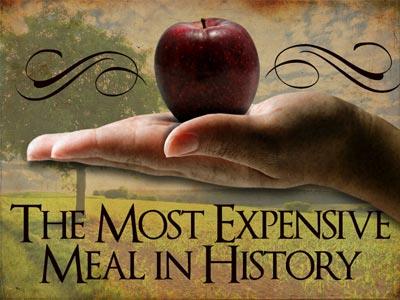-
Passing On A Heritage Of Faith Series
Contributed by John Hamby on Jul 24, 2001 (message contributor)
Summary: An examination of Amram and Jochebed’s faith reveals two principles about faith and the application of passing on a hertiage of faith.
A Study of the Life of Moses
Sermon # 1
“Passing On A Heritage of Faith”
Exodus 1 – 2:9
Dr. John R. Hamby
This morning we are going to begin a study of the life of Moses. For many of the older generation the mere mention of Moses brings to mind a picture of Charlton Heston, as he played the leading role in Cecil B. Demille’s production of “The Ten Commandments.” In this picture he is strong, handsome, and wise. For today’s generation if you mention Moses their thoughts are more likely tied to his depiction in Walt Disney’s “The Prince of Egypt,” an entertaining animated production of the life of Moses. Here he is pictured as athletic, quick witted and fun loving.
As we look at the biblical record we will discover that neither of these depictions are accurate, that Moses was a real man with real struggles, some which he did not handle very well. It is a story of man who in spite of his shortcomings was used by God.
You will remember in our recent study of Joseph that because of a severe famine Jacob and his sons and their families came to Egypt where Joseph provided for their needs. When they arrived in Egypt we are told in beginning in chapter one and verse five, “all those who were descendants of Jacob were seventy persons (for Joseph was in Egypt already). (6) And Joseph died, all his brothers, and all that generation. (7) But the children of Israel were fruitful and increased abundantly, multiplied and grew exceedingly mighty; and the land was filled with them.”
From a small band of people numbering seventy people, this little band had become a mighty nation, swelling in number to perhaps in excess of two million people. The new Pharaoh began to perceive of the Israelites as a threat. Verse eight says, “Now there arose a new king over Egypt, who did not know Joseph. (9) And he said to his people, “Look, the people of the children of Israel are more and mightier than we; (10) come, let us deal shrewdly with them, lest they multiply, and it happen, in the event of war, that they also join our enemies and fight against us, and so go up out of the land.” (11) Therefore they set taskmasters over them to afflict them with their burdens. And they built for Pharaoh supply cities, Pithom and Raamses.”
It likely that the king referred here was new in a very significant sense, perhaps he represented not only a new person but: very likely a new ruling family.
He feared the numerical strength of the Israelites and began to look for way to diminish their number. He feared that they would become allies with their enemies and would overcome them and leave Egypt. Interestingly everything that Pharaoh feared came to pass in spite of his best efforts.
Pharaoh’s first plan was to enslave the Israelites and tighten their control over them. A large part of the plan involved intimidation and oppression, designed to so demoralized the Israelites that they would not have the strength to resist. Pharaoh utilitized the large slave labor force to strengthen the country.
But it seems the more they were oppressed, the more they multiplied and spread. In verse 12 we read, “But the more they afflicted them, the more they multiplied and grew. And they were in dread of the children of Israel.”
The Egyptian response to the continued numerical growth of the Israelites was to increase the workload and to intensify the harassment and cruelty imposed on them by their taskmasters. “So the Egyptians made the children of Israel serve with rigor. (14) And they made their lives bitter with hard bondage—in mortar, in brick, and in all manner of service in the field. All their service in which they made them serve was with rigor.”
Frustrated by the ineffectiveness of the previous attempts to curtail the rapid growth of the Israelites, concern now turned to near panic. Pharaoh now turns to the Hebrew midwives and tells them in verse 15, “Then the king of Egypt spoke to the Hebrew midwives, of whom the name of one was Shiphrah (shif’-rah) and the name of the other Puah; (poo-ah) (16) and he said, “When you do the duties of a midwife for the Hebrew women, and see them on the birthstools, if it is a son, then you shall kill him; but if it is a daughter, then she shall live.”
Pharaoh says, “When a baby is born among the Hebrews if it is a girl let it live but if it is a boy you see that it dies.” According to the instructions they were watch closely as each Hebrew child was born and if were a boy they were to snuff out its life before it could utter its first cry. Then the mid-wife could say to the mother, “I am sorry but the child did not live.” It is a hideous idea, but frankly it pales in comparison to the modern day practice of partial birth abortions.

 Sermon Central
Sermon Central



